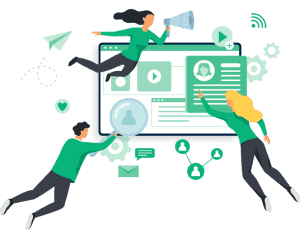Why Brokers Need Secure Post-Trade Automation

In today’s brokerage industry, front-office trading grabs most of the spotlight. But what happens after the trade is just as critical.
In brokerage back offices, manual work and old systems can lead to costly mistakes that hurt profits, reputation, and efficiency.
Below, we share a sneak-peek from one of our current trading projects. Learn how the software we built solves our client’s problems. If you have a brokerage business, this is a must-read.
What Is Post-Trade Processing in Brokerage?
Post-trade processing refers to all activities that occur after a trade is executed. This includes trade confirmation, settlement, reconciliation, fee calculation, and reporting. These processes ensure that financial transactions are completed accurately and on time.
Why Are Post-Trade Errors So Costly for Brokers?
Post-trade processing errors are more common – and costly – than many brokers care to admit. They often result from manual workflows and outdated systems, and can lead to settlement failures, client dissatisfaction, increased operational costs, and regulatory penalties. According to the DTCC, about 20% of trade settlement failures stem from incorrect standing settlement instructions caused by manual data entry.
Common Consequences of Post-Trade Errors:
- Penalties from exchanges
- Delays in invoice processing and cash flow
- Reputational damage
- Inefficiency in staffing and operations: Companies need to employ more highly qualified middle-office personnel to manage and correct errors.
How Can Automation Reduce Errors and Penalties?
Our client approached us with an array of problems they had to deal with on a daily basis. We helped them turn Google Sheets & manual work into an automated, secure internal system.
Key Results?
- Our custom-built system helped a client transition from Google Sheets and manual processes to a secure, automated environment.
- Reduced post-trade errors from 10% to 0%
- Minimized exchange complaints and penalty fees
- Faster invoice generation after settlement
- Streamlined financial operations
- Reduced staffing requirements: Client reports needing fewer highly-qualified middle office staff, allowing more efficient resource allocation.
- Secure environment: Our closed system architecture provides psychological reassurance that sensitive data remains protected within the broker’s environment.
What Features Should a Secure Post-Trade System Include?
An effective post-trade system should provide:
- Error Reduction Mechanisms – Automatic data checks and real-time validation. Our system minimizes errors, resulting in minimal exchange complaints or penalty fees over the past year. By automating post-trade in a single secure system, we also remove the need for ad-hoc workarounds (like texting someone to fix a trade or sending CSV files).
- Immediate Invoice Generation – The system should generate invoices for clients or internal records immediately after settlement. Brokers benefit from faster invoice processing, meaning they bill clients or counterparties right away instead of batching it days later.
- Data Security – Closed system architecture to prevent data leaks
- User Access Controls – Restrict access to sensitive financial data
- Regulatory Compliance – Audit trails and reporting functionalities
Why Should Brokers Modernize Post-Trade Systems Now?
As markets move toward faster settlement cycles—such as the US and Canada’s shift to T+1—manual processes can no longer keep up. In 2023, 81% of North American brokers still used manual or legacy post-trade systems (SWIFT). Brokerage firms that lack automation simply won’t keep up with the required processing speed. They’ll face more settlement failures and penalties while more agile competitors sail through.
Risks of Delay:
- Increased settlement failures
- Lost competitive edge
- Non-compliance with regulatory timelines
Modernizing middle- and back-office operations could boost the industry’s pre-tax profits by up to 25% (dtcc.com). A secure post-trade system is no longer just an IT upgrade – it’s becoming a baseline requirement for doing business safely.
Frequently Asked Questions (FAQ)
What are the benefits of automating post-trade processing?
- Reduced operational risk
- Faster settlements
- Improved client relationships
- Cost savings from fewer staffing needs
How does a secure post-trade system work?
It automates the confirmation, settlement, and invoicing processes using a closed, permissioned architecture. This prevents manual errors and enhances data integrity.
What should brokers look for in a post-trade system?
Look for automation, security, real-time processing, and compliance support.
Want to Eliminate Post-Trade Errors and Penalties?
Investing in a secure, automated post-trade management system is one of the smartest moves a brokerage firm can make. Pragmatic Coders specializes in building secure, automated post-trade systems tailored to your brokerage needs.
Reach out to discuss how we can tailor a trade management system that will eliminate your post-trade pain points and drive your brokerage forward.








